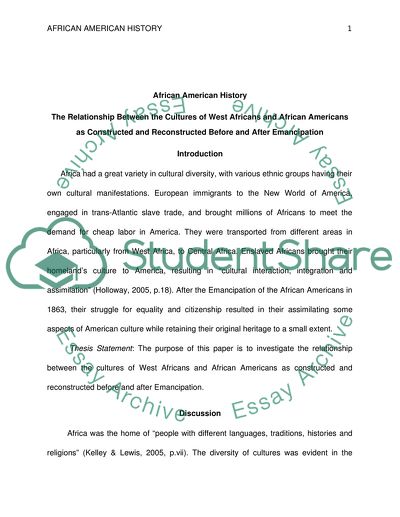Cite this document
(“West African and African American Cultures - Before and After Assignment”, n.d.)
Retrieved from https://studentshare.org/history/1560239-african-american-history
Retrieved from https://studentshare.org/history/1560239-african-american-history
(West African and African American Cultures - Before and After Assignment)
https://studentshare.org/history/1560239-african-american-history.
https://studentshare.org/history/1560239-african-american-history.
“West African and African American Cultures - Before and After Assignment”, n.d. https://studentshare.org/history/1560239-african-american-history.


